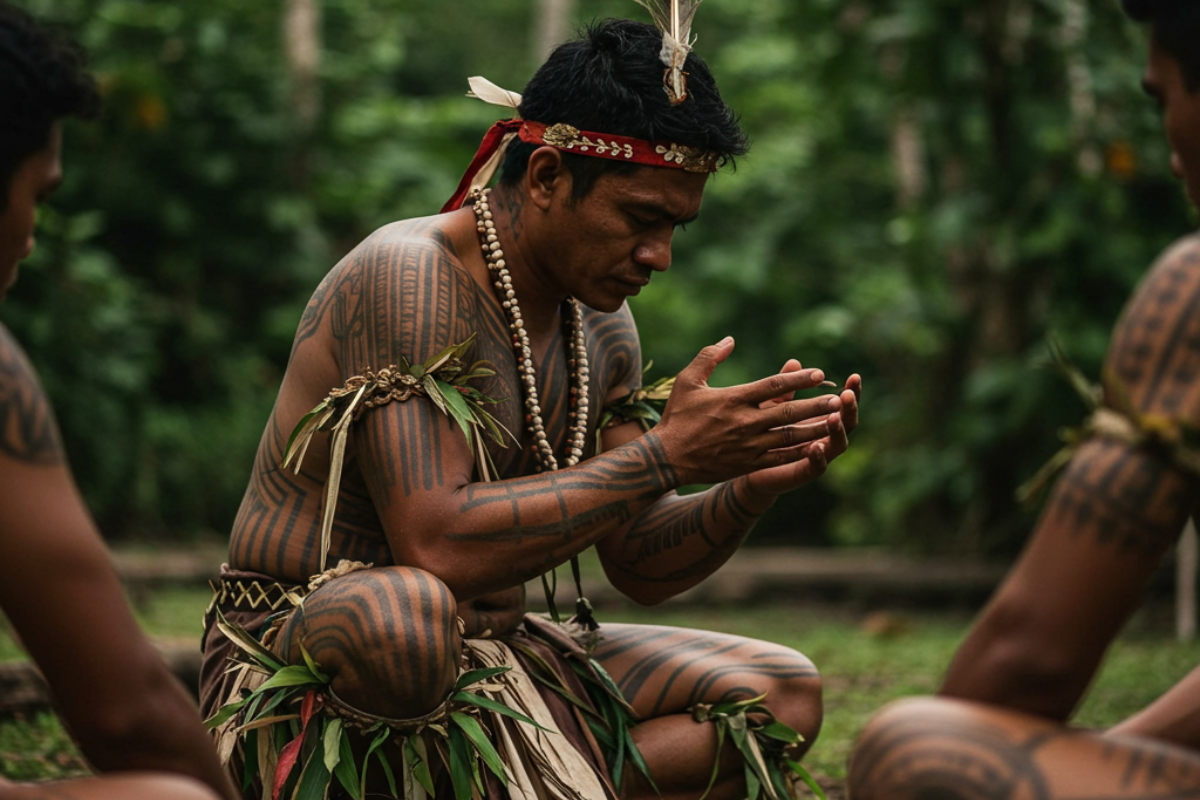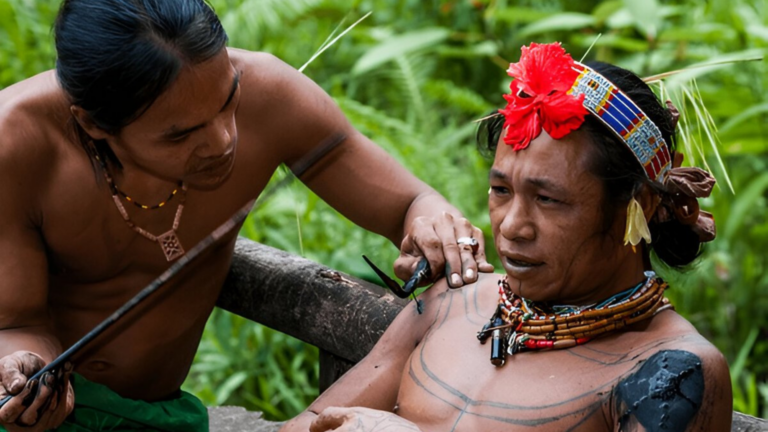Deep within the rainforests of Sumatra lies an extraordinary artistic heritage: the Mentawai tattoo. Recognized as one of the world’s oldest tattoo traditions, this art form is more than just body decoration; it’s a profound expression of spirituality, identity, and a harmonious connection with nature. In this post, we’ll explore the remarkable journey of Mentawai tattoos, from sacred rituals to stunning modern interpretations.
History and Meaning
Mentawai tattoos, or “titi,” have been practiced for millennia by the Mentawai people of Siberut Island. Each motif carries deep symbolic meaning, reflecting social status, ancestral connections, and a balance with the natural world.
The tattooing process is highly sacred, involving specific rituals and the use of traditional tools passed down through generations. Natural materials, such as charcoal and plants, are used to create the long-lasting ink.
The Role of the Sipatitik
The Sipatitik, the traditional Mentawai tattoo artist, plays a crucial role in preserving and passing on this heritage. They are not merely artists but also guardians of cultural knowledge and values.
Modern Transformation
In the modern era, Mentawai tattoo art is experiencing a revival, with tattoo artists inspired by the beauty and meaning of traditional motifs. They are creating stunning works, blending ancient elements with contemporary styles.
Omagna Ink Tattoo Studio is one such studio that honors the Mentawai cultural heritage, creating works inspired by Mentawai motifs with a modern twist.
Artwork Gallery
(Insert high-quality photos and videos showcasing traditional Mentawai tattoos and modern interpretations. Include captions explaining the meaning of the motifs and the tattooing process.)
Call to Action
Share this post to help preserve the Mentawai cultural heritage. If you’re interested in getting a tattoo inspired by this ancient art, contact Omagna Ink Tattoo Studio for a consultation.


